Vesicant Chemotherapy Drugs: The Complete FAQ Guide In 2025
After looking at this title you might be wondering what vesicant chemotherapy drugs. How do they function? Are they different from standard chemotherapy drugs? Surprisingly, not every chemotherapy drug is the same and has an identical mode of action.
Some of these anti-cancerous drugs when injected, deliver their effects, and then leave. Other? Well, they cause severe tissue damage and pain if they leak from a vein or are injected into the surrounding tissue area by mistake. Yes, these substances are vesicant chemotherapy drugs.
Although, they’re very beneficial in chemotherapy. Yet, they pose a lot of risks that demand caution and skill. This guide is aimed to educate you science behind the vesicant chemotherapy drugs and equip you with up-to-date answers to all your queries about these medications. Let’s start!
1.How can you define vesicant chemotherapy drugs?
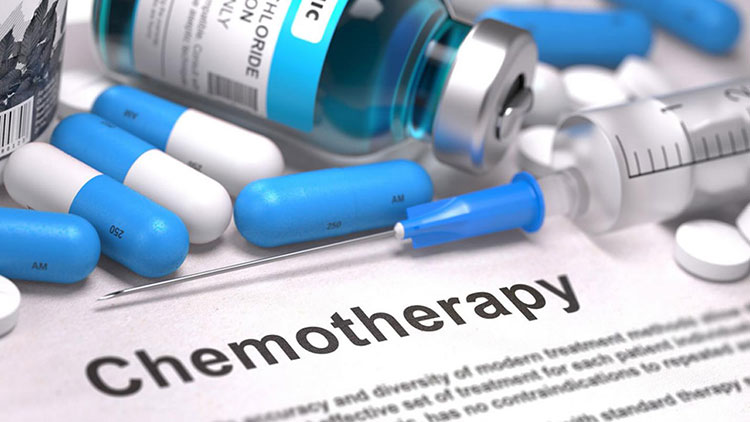
Vesicant chemotherapy drugs- picture courtesy: health jade
To put simply, they’re a type of cancer-fighting drug that leads to tissue injury or, severe damage if they escape the vein in which injected or infused. You might confuse them with irritants, but they’re very different from the latter.
Irritants just cause mild swelling, pain, redness, or, burning sensation along the infused vein, but vesicants chemotherapy drugs can result in burning, extreme swelling, peeling, and even tissue death if they’re exposed to skin cells, muscles, or soft tissues surrounding veins.
Not only that these drugs remain in tissues even after initial seepage and keep on damaging tissues, which sometimes worsens over days or weeks.
2.Why vesicant chemotherapy drugs are preferred despite their risks?
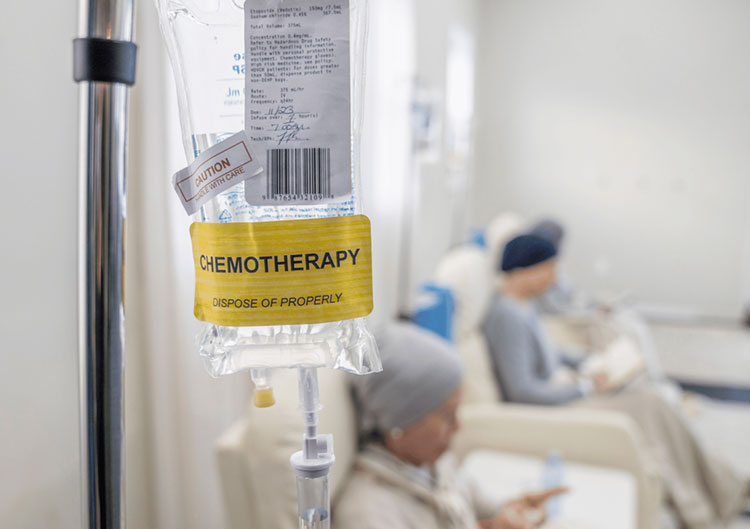
Chemotherapy Drugs Cancer Patients- Picture Courtesy: Mesothelio Mahub
Despite their serious tissue-injuring potential, vesicant chemotherapy drugs are favored in many cancer treatment procedures because they target and destroy cancer cells. Here are the reasons why vesicant chemotherapy drugs are still popular today:
Extreme Anti-Cancer Potency
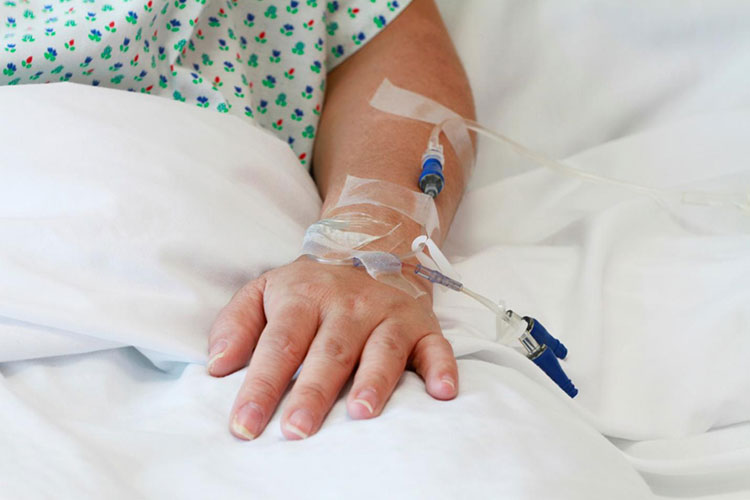
Vesicant Chemotherapy Anti- Cancer- Picture Courtesy: Healthfully
One of the major reasons why vesicant chemotherapy drugs are favored by many physicians is because they are very powerful and efficacious cancer-fighting medications. They often attack cancer cells directly by binding with DNA and destroying their ability to replicate and multiply. Or they lead to cell death by other mechanisms. Due to this targeted action, patients quickly achieve remission or cure.
Broad Spectrum Treatment
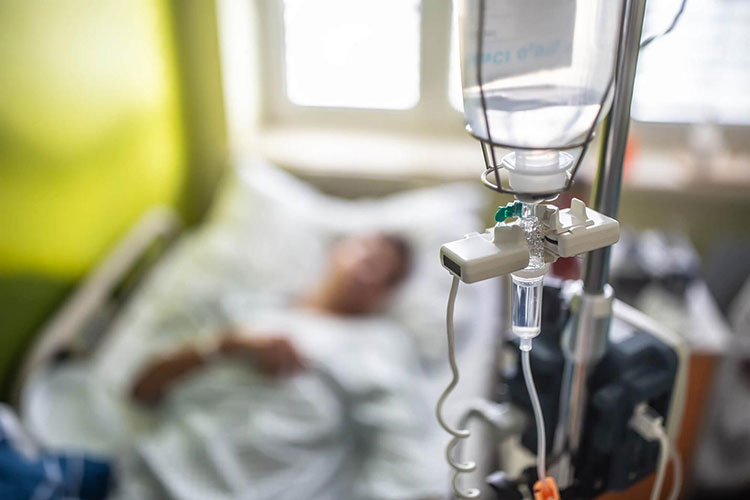
Extravasation During Chemotherapy Oncology- Picture Courtesy: Oncology Nurse Advisor
Many anticancer drugs are specific for particular cancer types. However, this is not the case with vesicant chemotherapy drugs. Without a doubt, they fight diverse cancer types, for instance, lymphomas, breast, lung, ovarian, colorectal, and some solid tumors. Consequently, due to this broad-spectrum functionality, they’ve become indispensable in oncology treatment.
Established Clinical Response
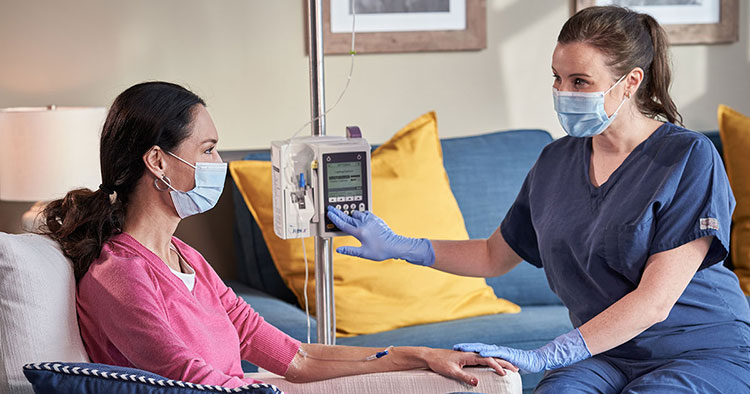
Chemotherapy Patients Treatment- Picture Courtesy: Cancer Center
Over time, many studies and examinations have been conducted on vesicant chemotherapy drugs, which have established their efficacy. So, they’ve become a fundamental part of chemotherapy regimens, as they improve patient life expectancy by increasing their survival rates. Moreover, using these drugs allows you to have a positive cancer prognosis. Substituting them with other chemotherapy drugs might mean poor patient prognosis.
Lack of Substitutes
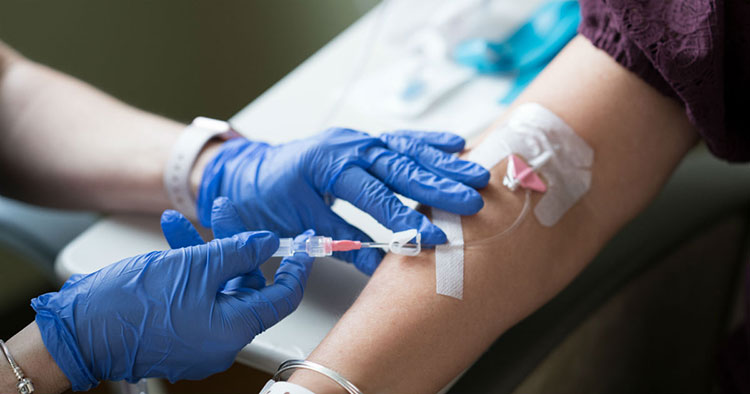
Potential Causes And Lack Of Substitute- Picture Courtesy: Cancer Center
Although you might’ve read about ongoing research efforts to develop novel, safer chemotherapy agents to treat diverse cancers, still there isn’t any non-vesicant substitute that provides just as effective outcomes or benefits as that of vesicant drugs. Hence, vesicant chemotherapy drugs have unmatched advantages when it comes to fighting oncogenic cells.
Better Penetration

Better Treatments Of Patients- Picture Courtesy: Lung Cancer Center
Where many chemotherapy regimes fail vesicant chemotherapy drugs shine. This is because some of these drugs are enormously good at penetrating cancerous cells. Due to this, they disrupt the function of vital cellular components (DNA, RNA, or proteins), subsequently, stopping cell division and survival of tumor cells.
3.What antineoplastic drugs fall under the category of vesicant chemotherapy drugs?
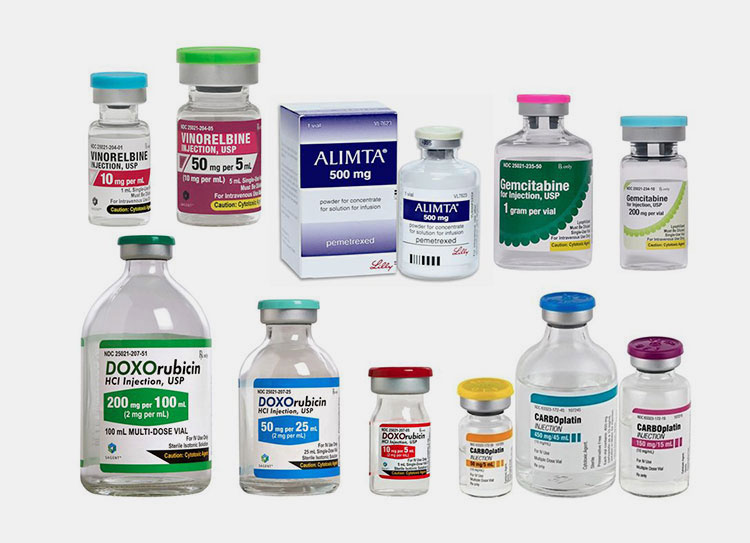
Different Types Of Chemo Drugs- Picture Courtesy: Mavink
It may seem like a surprising fact to you that a significant proportion of anticancer drugs are classified as vesicant chemotherapy drugs. For your knowledge, here are major categories of chemotherapeutic drugs that are considered vesicant.
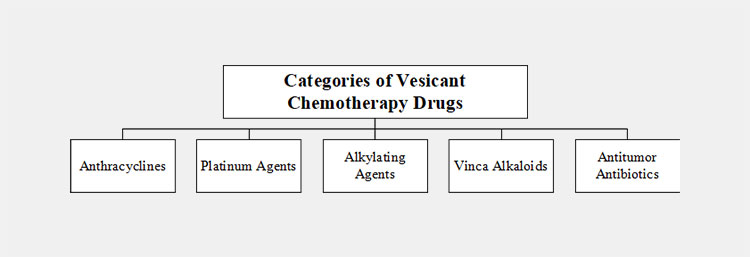
Categories of Vesicant Chemotherapy Drugs
Anthracyclines
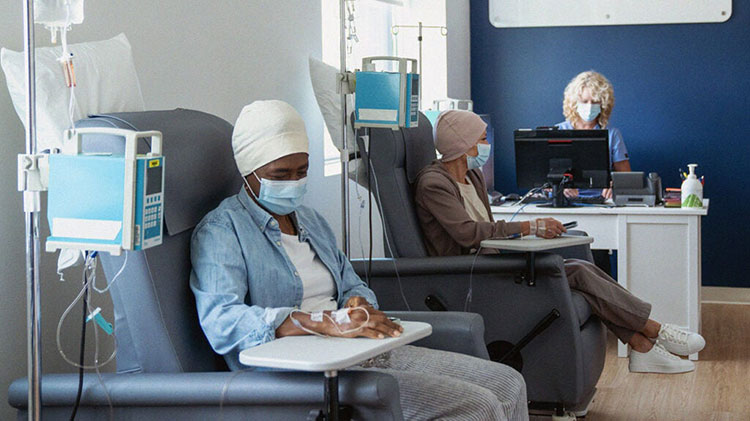
Anthracyclines Chemotherapy Drugs- Picture Courtesy Medical News Today
Believe it or not, you can make anthracyclines from the bacteria called Streptomyces. You can think of them as antibiotics because of their origin. It is a widely prescribed class of chemotherapy drugs. They work by harming the DNA of tumor cells, consequently, these cells can’t reproduce and die. They include aclarubicin, doxorubicin, and, epirubicin.
Platinum Agents
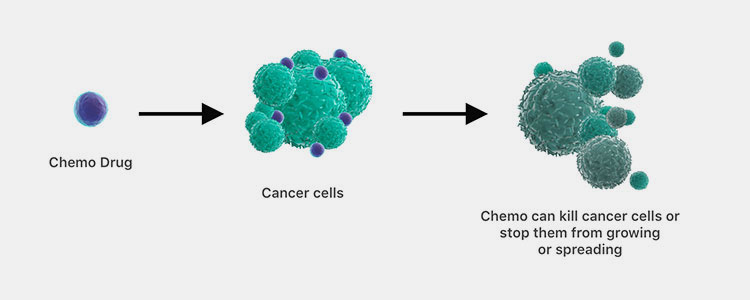
Chemotherapy Drug Docetaxel- Picture Courtesy: Drug Watch
Even though they’re normally irritant, some of their forms are considered vesicant at larger doses. As the name indicates, they consist of platinum. This element is the one that attaches to the DNA of neoplastic cells and might induce DNA damage and cell death by the immune system of the body. Cisplatin is vesicant at concentrations ≥0.5 mg/mL.
Alkylating Agents
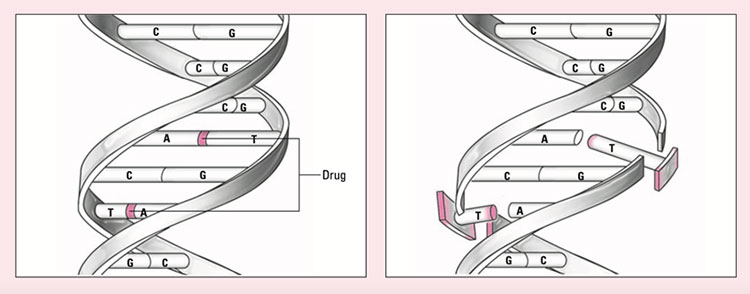
Alkylating Agents- Picture Courtesy: Sentinel Nurse
You’re spot on. These agents add an alkyl group to the nitrogenous bases of DNA, thus inhibiting two DNA strands from linkage. Consequently, breakage occurs that in turn stops the cell from dividing. Fun fact: alkylating agents were the very first drugs used for treating cancer. Although, they’re effective in every cancer type; however, most commonly prescribed for treating slow-growing cancer, like leukemia or solid tumors.
Vinca Alkaloids
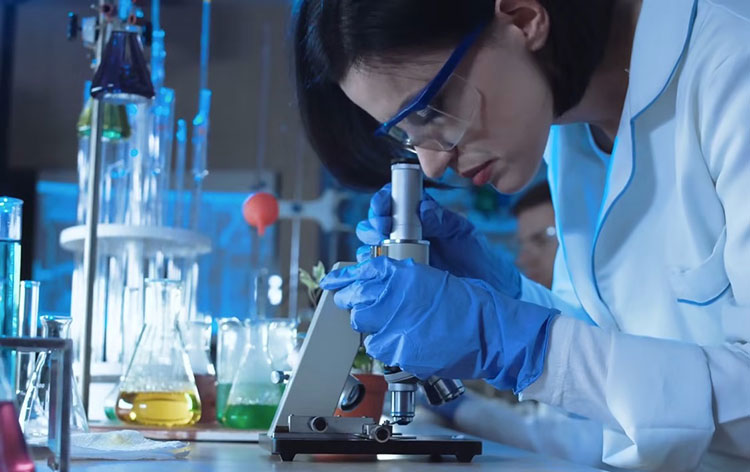
Chemotherapy Vinca Alkaloids- Picture Courtesy: Doctor Pedia
Did you know that you can isolate these drugs from a periwinkle plant? They can be naturally occurring or semi-synthetic. Unlike other vesicant chemotherapy drugs, they don’t bind to DNA but rather interfere with cell multiplication of neoplastic cells by attaching with a protein called tubulin. This protein forms the microtubules that are integral for dividing cells.
Antitumor Antibiotics
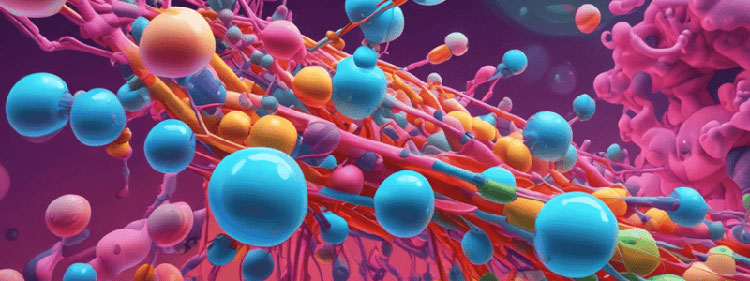
Antitumor Antibiotics- Picture Courtesy: Quiz Gecko
Named as such because of their microbial origin. They also disrupt a cell's ability to multiply by binding with DNA and inhibiting DNA doubling or protein formation.
4.What are common packaging types of vesicant chemotherapy drugs?
Though, chemotherapy drugs are packed in vials, ampoules, and, prefilled syringes; however, vesicant chemotherapy drugs mostly come in vials and ampoules. Vial filling lines and ampoule filling lines integrated with different subunits are employed for filling and sealing these medications in vials and ampoules.
Glass Vials
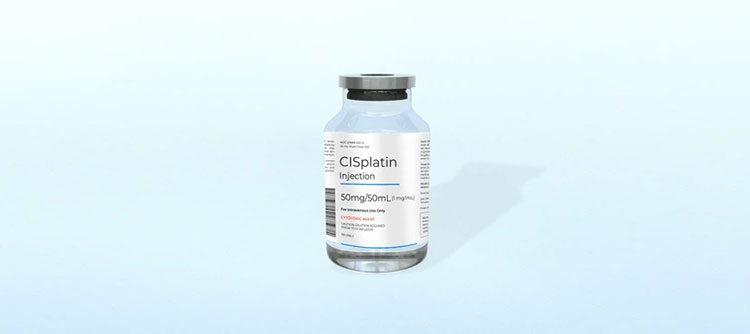
Glass Vial
Very prevalent method for holding vesicant chemotherapy drugs. The reason? Because glass is air-proof, strong, and, impervious material. Hence, doesn’t allow air, and moisture to pass through it. Furthermore, it is compatible with vesicant chemotherapy drugs since it’s nonreactive and can withstand extremes of temperature and pH. You’ll notice that often type 1 borosilicate glass is used for making glass vials.
Glass Ampoules
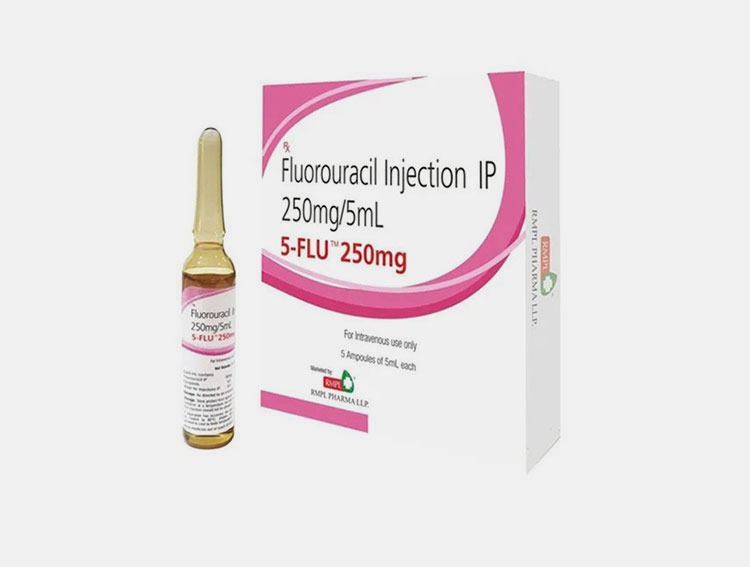
Glass Ampoules- Picture courtesy; Aark Pharmaceutical
This is suitable for small-volume formulation and single use. The glass ampoules are robust and stable with amber colored surface that is important to maintain the stability of active ingredients and ensures the offering of potent formulation.
5.How are vesicant chemotherapy drugs prepared in industries?
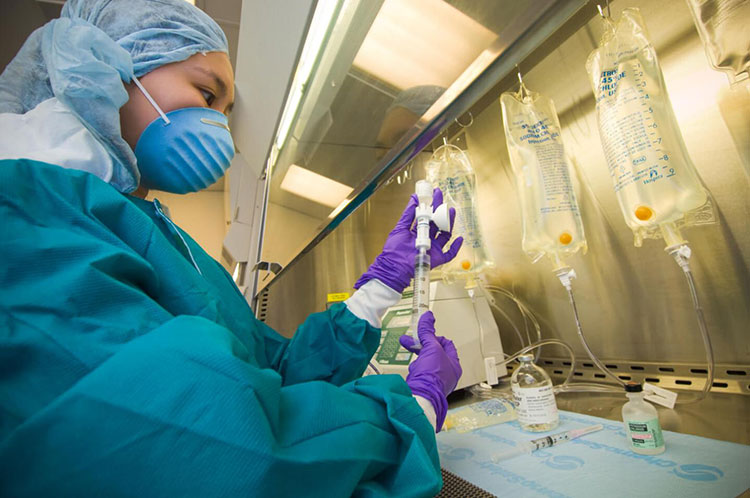
Chemotherapy Preparation- Picture Courtesy: Blog Dana Farber Org
As you would be familiar with the fact that industrial manufacturing of vesicant chemotherapy drugs is a complicated operation. Many steps occur in succession to formulate safe and potent anticancer drugs for patients. Here we’re giving a detailed description of every step in vesicant chemotherapy drugs below:
Discovery and Selection Step

Drug discovery and selection- Picture courtesy: LGC Standard
There is no doubt that it is both an initial and foundation step for vesicant chemotherapy drug preparation. You’ve to carefully plan for your drug formulation in the discovery and selection phase. For developing suitable chemotherapy medication, you must take into account the stability, utility, as well as combability of vesicant agents with packaging materials.
In addition to this, you must choose the right excipients and buffering compounds to optimize your vesicant drug preparation.
Bulk Drug Substance (BDS) Delivery
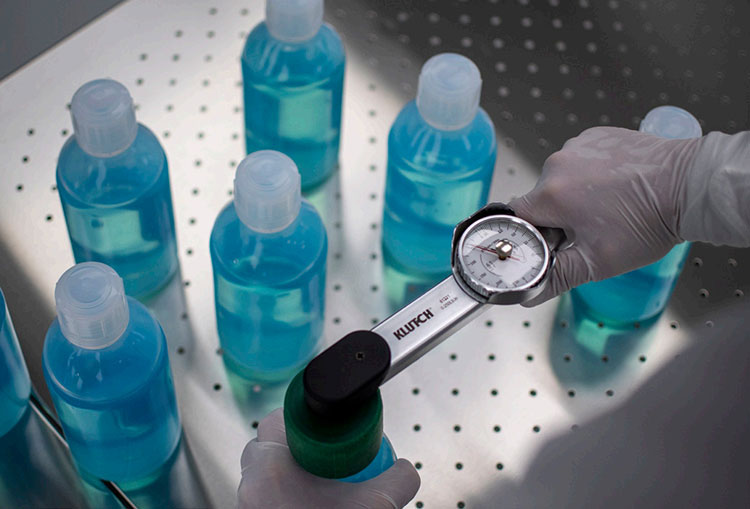
Bulk Drugs Substance Containers Deliver- Picture Courtesy: Bio Process Intl
Once you’ve selected the right drug and excipients, now it’s time to bulk order your vesicant drug substance. When you receive your delivery, immediately transfer the drug substance to cold-chain storage.
Compounding and Mixing
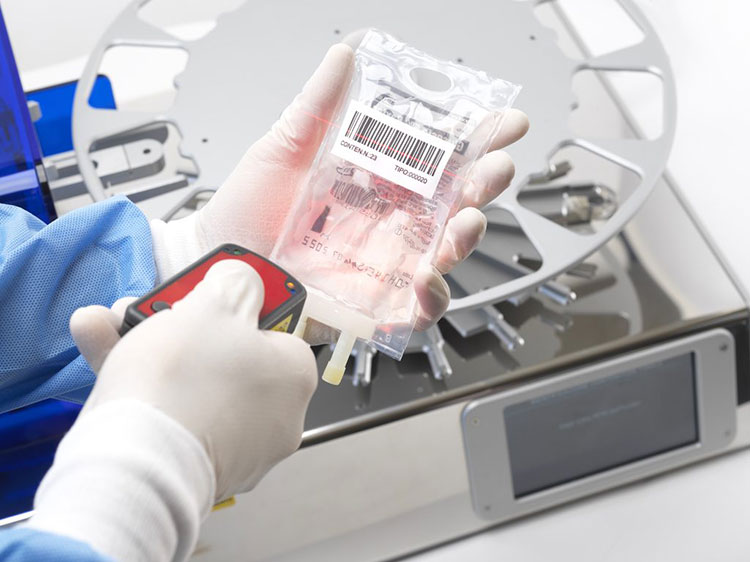
Chemotherapy Drugs Compounding- Picture Courtesy: Axis Medical Gr
When you’ve to prepare chemotherapy formulation, take your drug out of the storage and thaw it in the closed systems to avoid ambient air contact with it. This will also prevent its contamination by airborne pathogens. After that, you’ll pool and prepare BDS formulation in specialized cleanrooms using high-tech tanks with stirrers.
For compounding BDS, you’ll use Water for Injection (WFI) as a solvent. WFI will dissolve active ingredients and excipients under accurate conditions of temperature, pressure, and pH. Often nitrogen sparging is also employed during mixing to remove oxygen and to stop microbial ingress.
Sterilization of Components
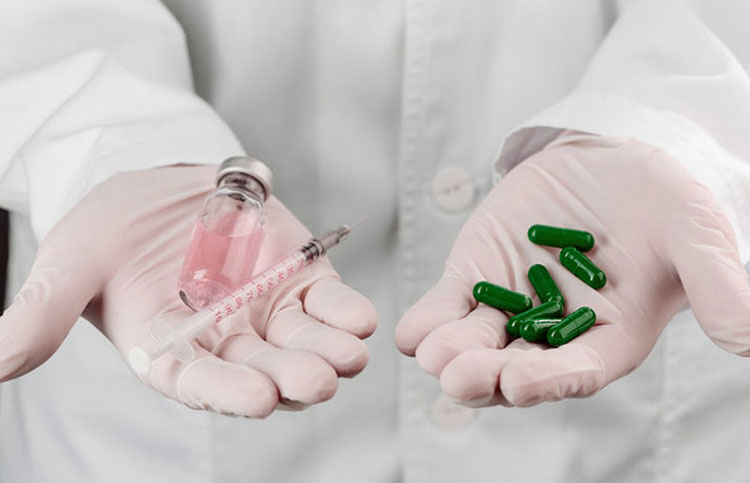
Sterilization Of Chemotherapy Drugs
Before filling formulation, first, you’ll sterilize every piece of equipment, for instance, vials, pre-filled syringes, and stoppers using autoclaves, depyrogenation tunnels, or, gamma radiations.
Not only this but your prepared formulation is also sterile filtered by an ultra-fine membrane. This ensures that your drug formulation is completely devoid of microbes.
Aseptic Filling
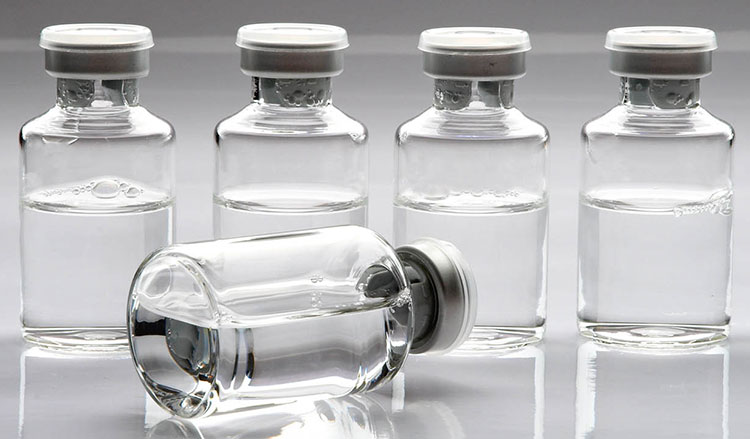
Aseptic Filling- Picture Courtesy: PCI
In this step, your formulation is dosed precisely into pre-sterilized vials or other containers with the help of diverse types of aseptic filling lines. Normally, these production lines work within isolators or laminar flow hoods to keep preparation, containers, machines, and, surroundings ultra-clean.
Instantly after product filling, the packaging is sealed with a rubber stopper and maybe with aluminum crimp seals if lyophilization of the product is not required.
Lyophilization
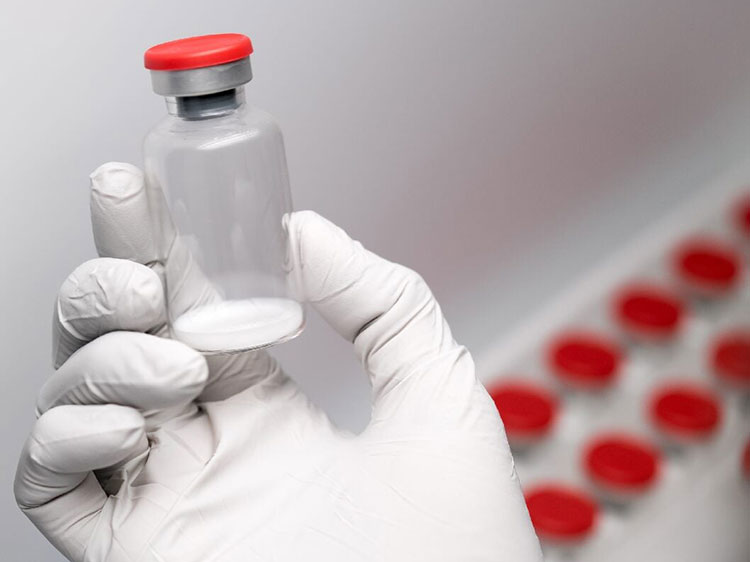
Lyophilization Chemotherapy Drugs- Picture Courtesy: Clinical Trails Sarena
It is quite obvious that some types of vesicant chemotherapy drugs have less stability when they’re in liquid form, that’s why, you must lyophilize them at freezing temperatures. After freezing, under vacuum settings, temperatures are raised to evaporate water. This creates stable dry powder cakes.
Labeling
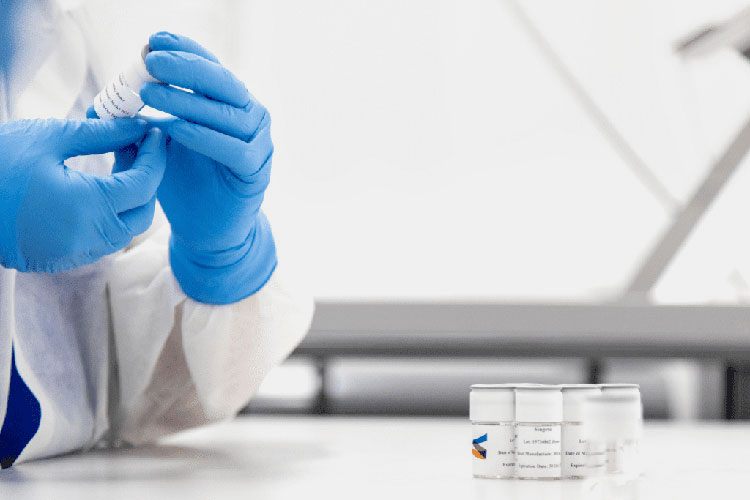
Labeling of Chemotherapy Drugs Formulation- Picture Courtesy: Singota
Upon completion of the lyophilization step, you’ll transfer your product containers to a labeling machine that pastes labels with vital information (formulation name, dosing volume, drug formula, expiry date, and storage instructions) on containers.
Cartoning
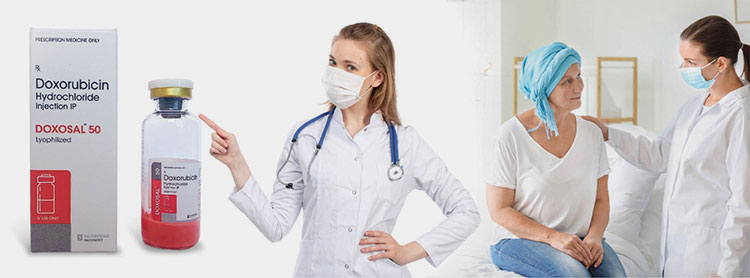
Cartoning Chemotherapy Drugs
In the end, containers are put into cartons along with a product leaflet mentioning detailed information regarding vesicant chemotherapy drugs.
6.What equipment can you use to make vesicant chemotherapy drugs?
After learning the steps regarding vesicant chemotherapy drug manufacturing, now you must be wondering about machines used to make these drugs. So, to put your mind at ease, we’re penning about various machines used in their manufacturing in the following section:
Auxiliary Equipment
Water Treatment Plant
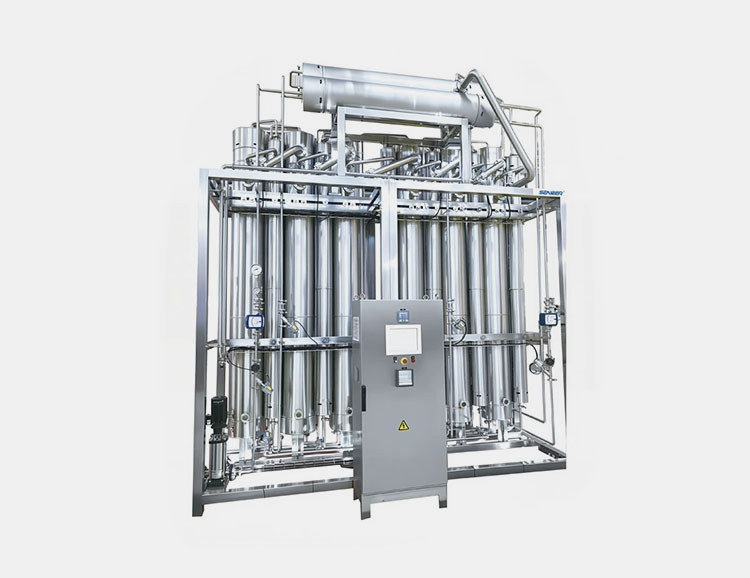
AIPAK Engineering Water Purifying System
Indeed, it is important to have a water purifying system in your productions. Everyone knows that ultrapure water or water for injection is the main solvent in vesicant chemotherapy drug formulation. So, for purifying water, you need a water treatment system. After water treatment with this component, you’ll have 99.9% pure water without any salts, ions, organic debris, etc.
CIP/SIP System
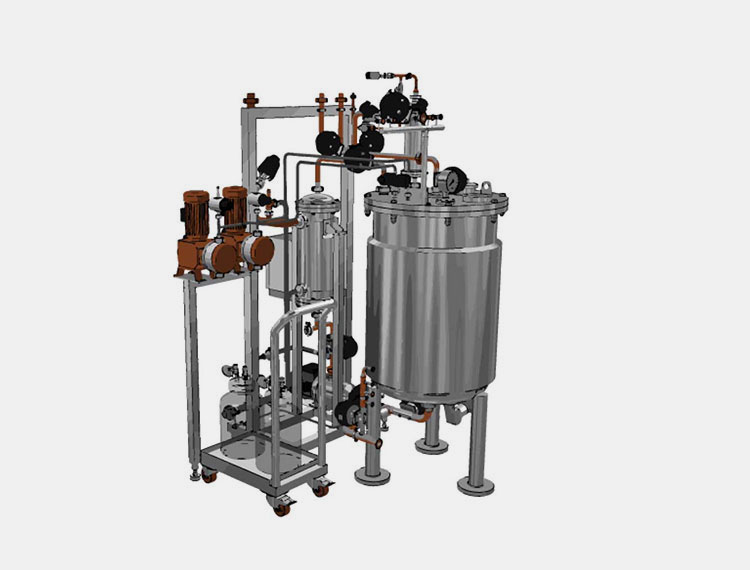
CIP/SIP System- Picture Courtesy: Biospek
For sure, properly cleaning your systems after use allows you to make vesicant chemotherapy drugs without any cross-contamination. This thorough cleaning of equipment is achieved using CIP/SIP devices. With the steam generated by these systems, you can automatically rinse and wash your core and axillary equipment without even disassembling them.
Lyophilizer
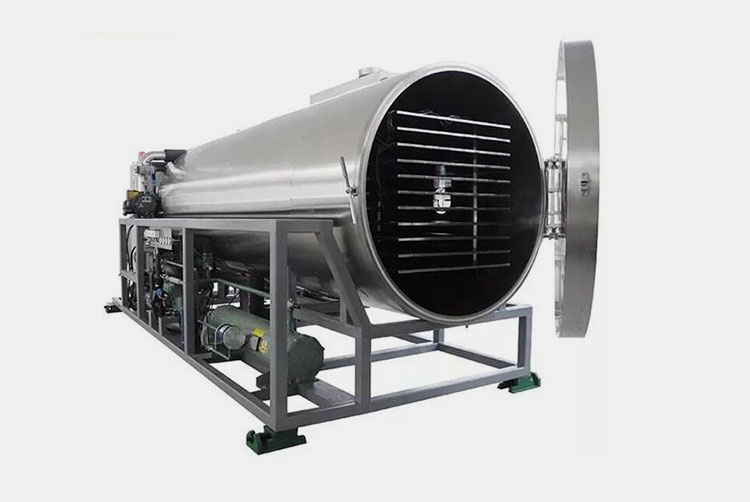
Vacuum Freeze-Dryer- Picture courtesy: Scientnz
Also called a freeze-dryer. In this equipment, vesicant chemotherapy drugs are freeze-dried with freezing vial contents at extremely cold temperatures and then the pressure inside the lyophilizer is reduced and heat is applied. Due to these conditions, frozen water turns into vapors without changing into liquid first. Hence, you’re left with a stable and powder product.
Clean Rooms
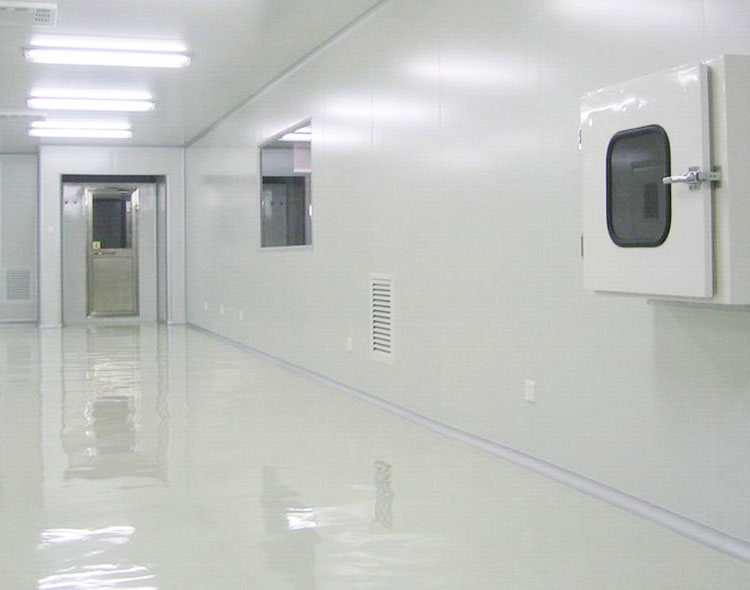
AIPAK Engineering Clean Rooms
Think of them as a specialized setup to limit airborne particles at negligible concentrations in production. Certainly, a pharmaceutical clean room is developed to lower the introduction, production, and retention of particles. Simultaneously, it also allows you to keep temperature, humidity, and air pressure under a specified range.
Core Equipment
Ultra-fine Membrane Filters
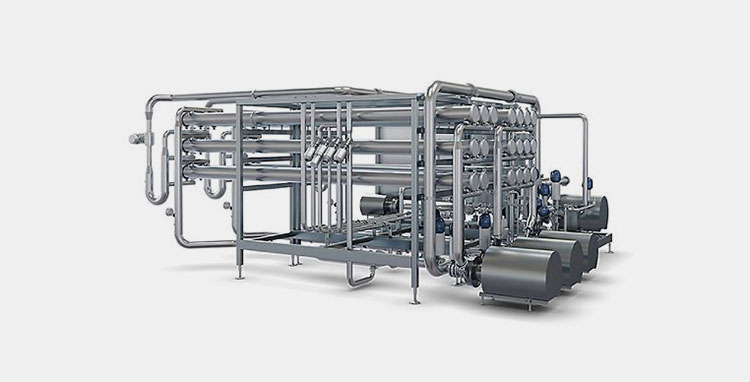
Ultra-fine Membrane Filters- Picture Courtesy: Tetra Pak
Mainly, ultra-fine membrane filters are utilized to sterilize vesicant chemotherapy drug formulation before filling. As the name indicates, this system comes with semi-permeable membranes with pores having sizes in the range of 0.01 to 0.1 microns. Using high pressure, your product preparation is forced through the membrane, and larger contaminants, bacteria, viruses, suspended impurities, etc. are removed from it.
Pharmaceutical Autoclaves
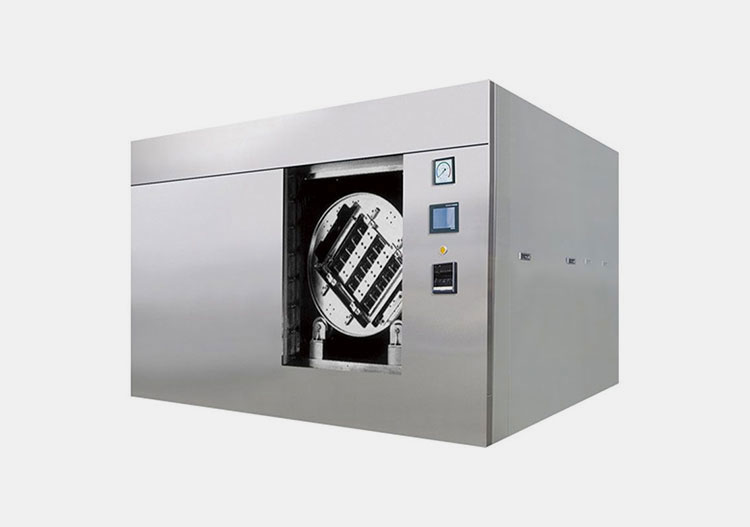
AIPAK Engineering Pharmaceutical Autoclave
Unquestionably, the sterility of containers has a major role in safeguarding the health of patients. So, you can sterilize your vials, rubber closures, aluminum crimp seals, and syringe plunger by putting them in the pharmaceutical autoclave. Hot steam and pressure created in this system, are very effective in killing microbes.
Vial Filling Lines
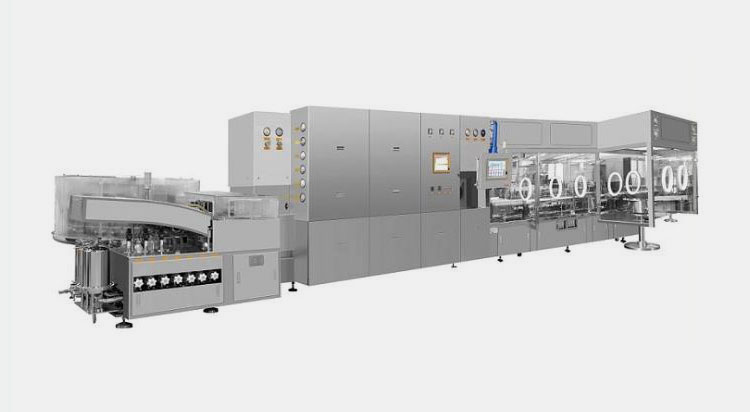
AIPAK Engineering Vial Lyophilization Injectable Powder Production Line
The vial filling line is not just a single unit but instead has various machines integrated together to safely fill vials. These machines are vial washing machine (use water sprays or ultrasonic waves to wash vials and WFI is circulated in it to completely wash each corner and edge of the vials), depyrogenation tunnel ( a compressed air and heat are used to dry and sterilize vials and with high-temperature sterilization, microbes as well as their byproducts are completely cleared), and a vial filling machine (that fills and seal the vials).
Ampoule Filling Line
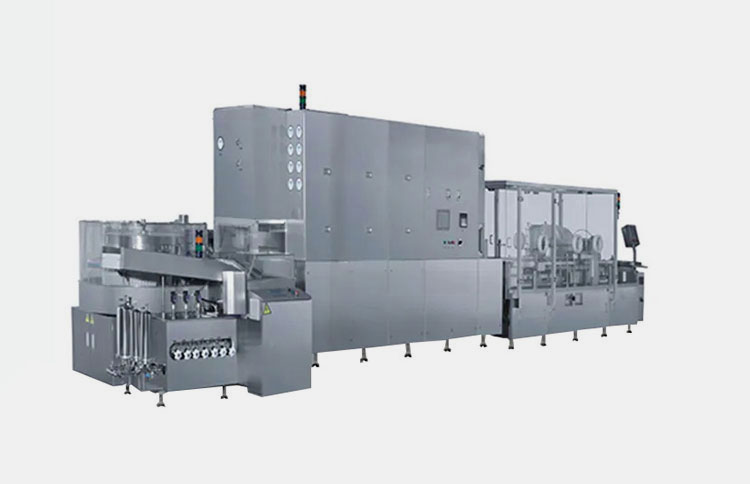
AIPAK Engineering Ampoule Filling Line
The ampoule filling line is also composed of a set of machines including a washing unit, sterilization tunnel, and filling, and sealing ampoule machine. The machine is capable of dealing with ampoules of volume 2ml to 20 ml with greater sterility. However, the unit has featured with pre and post-nitrogen filling option that promises no involvement of oxygen inside the ampoule. Therefore, high stability of vesicant chemotherapy drugs can be attained.
Labeling System
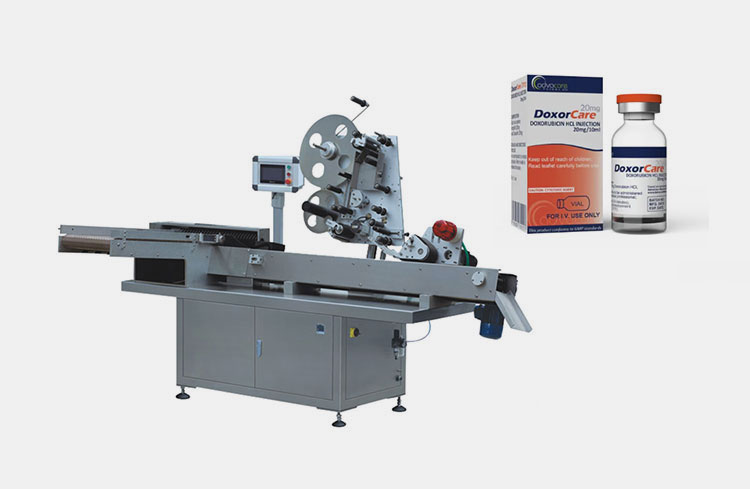
AIPAK Vial Labler
In order to inform your customers regarding the use of vesicant chemotherapy drugs, a labeling system is a must-have in the production lines. It firmly sticks labels on the containers using its labeling heads. Different labeling systems use various types of adhesives, such as hot-melt glue, wet-glue, or, pre-glued labels for labeling purposes.
Cartoning Machine
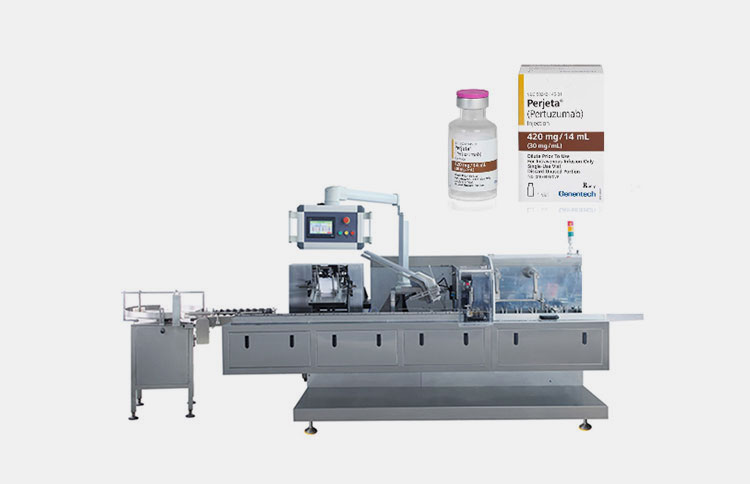
AIPAK Cartoner
To keep your vesicant chemotherapy drugs containers safe and secure, they’re placed in carton boxes by the cartoning machine. The function of this equipment is to create cartons using paperboard or cardboard sheets. Boxes are formed by erecting, folding, and sealing in it. Moreover, it also inserts leaflets in the cartons.
7.How can you safely inject vesicant chemotherapy drugs to minimize extravasation possibility?
As you are now familiar with the fact that extravasation risk is associated when administering vesicant chemotherapy drugs. To mitigate this possibility, you’ve to adopt different safe strategies and best practices, such as:
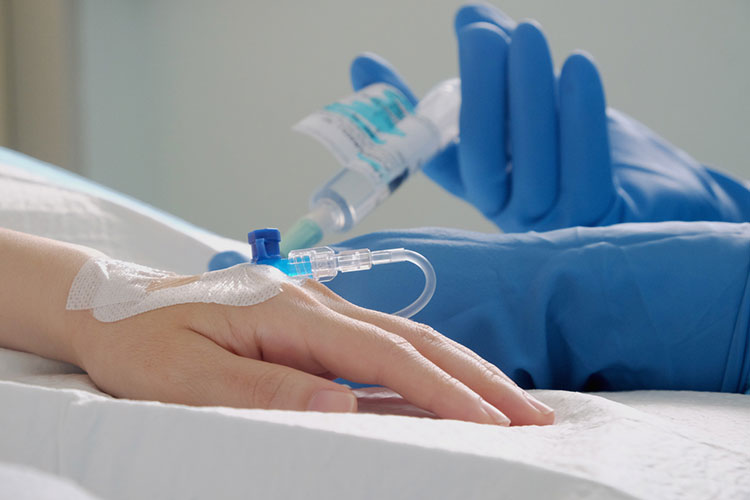
Injecting The Vesicant Chemotherapy Drugs- Picture Courtesy: Mount Miriam
| Right Vein Matters | Certainly, the selection of a suitable vein is key to minimizing extravasation. Usually, large and healthy veins are used for infusion. Don’t use smaller, delicate, or previously irradiated veins. And never ever pick veins in hands, wrists, or near joints because, with movement, you’ve more possibility of extravasation. |
| Central Venous Access is Ideal | If you’re administrating vesicant chemotherapy drugs multiple times to one patient, it is best to inject them using a central venous catheter (CVC) or port-a-cath device. CVC offers stable access to large veins in the neck or chest to infuse medications. While port-a-cath is surgically put under the skin. |
| Check the IV Area Closely | To minimize the effects of drug leakage, you must closely monitor the infusion area before, during, and after vesicant chemotherapy drug administration. It helps you to see signs of redness, swelling, or pain and immediately stop the infusion before it’s too late. |
| Use the Infusion Pumps Smartly | Nowadays, you’ve smart infusion pumps with built-in pressure alarm systems. With these sensors, you can easily recognize symptoms of blockage or infiltration. Moreover, you must slowly infuse vesicant drugs and under no circumstances, leave your patients unattended while they’re undergoing infusion. |
| Always Start with Checking for Blood Return | It is a very pivotal point. Before initiating infusion and during its course, you should gently aspirate the tube to confirm blood returns. This will tell you the catheter tip is still inside the intended vein. |
8.How do vesicant chemotherapy drugs differ from typical chemotherapy drugs?
Believe it or not, vesicant chemotherapy drugs are very different from standard chemotherapy drugs. For your information, we’re explaining these differences in the following section:
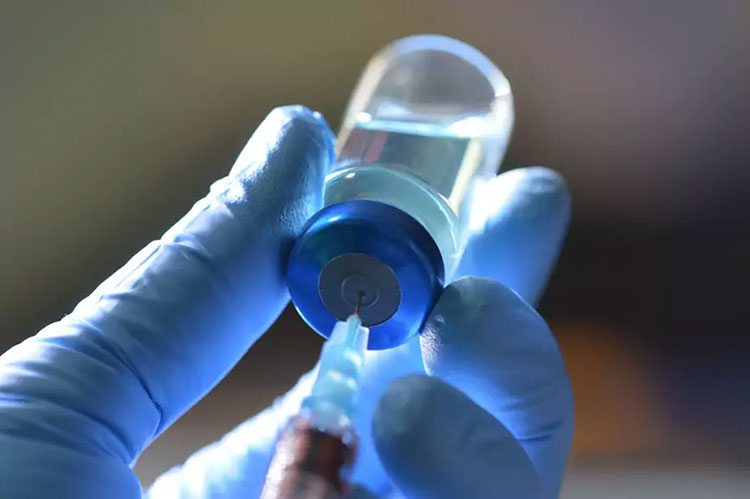
Vesicant Chemotherapy Drugs- Picture Courtesy: PJ
| Features | Vesicant Chemotherapy Drugs | Standard Chemotherapy Drugs |
| Function | Used for destroying cancerous cells, but are very toxic to surrounding normal, healthy tissues. | Its function is to damage or kill cancer cells. |
| Reaction to Drug Leakage | Blistering, ulceration, tissue burn, or, even necrosis. | Moderate redness or swelling. |
| Injecting Practices | Needs special care to reduce extravasation risk, and has to be infused in larger veins. Mostly, central lines are favored for their administration. | Easily and safely administer in any peripheral vein. |
| Handly Caution | You’ve to take high-level precautions, like wearing PPE or keeping emergency kits on hand. | Typical safety practices. |
| Monitoring | In its infusion, staff have to continuously check on patients. | Routine patient monitoring. |
| Example | Fluorouracil, cyclophosphamide | Mitomycin C, vincristine |
9.Can vesicant chemotherapy drugs cause long-term complications?
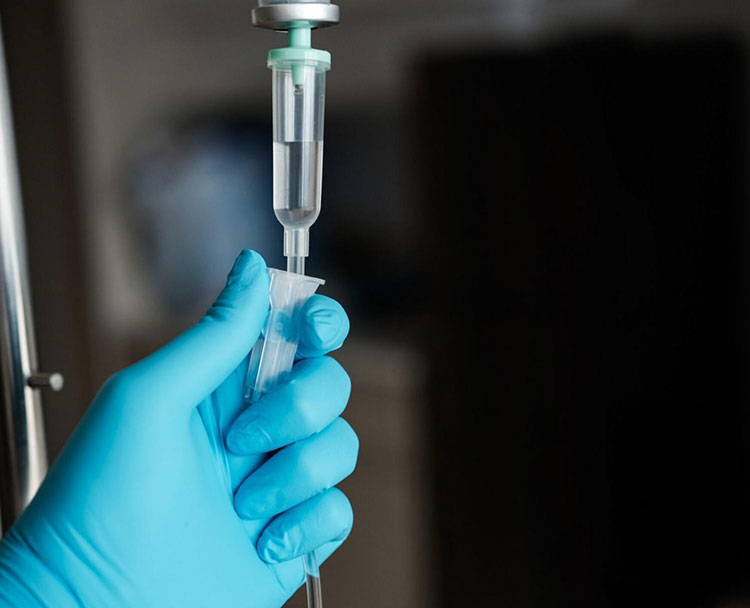
Chemotherapy Cancer Treatment- Picture Courtesy: Cancer Therapy Advice
To answer you shortly, unfortunately, yes. Vesicant chemotherapy drugs aren’t just hard on the body during infusion, if things go wrong, like in the event of their extravasation, they might leave lasting body damage.
You’re already familiar with the fact that they lead to ulcers or tissue death if leaked to surrounding tissues. What you might not know is that if this extravasation isn’t managed on time, you may require surgery or in extreme cases have limb function loss.
Also, they affect delicate nerves around the infusion area, resulting in constant pain, numbness, or tingling that may go on for months or might be a permanent consequence. In many cases, leakage of vesicant chemotherapy drugs can cause deep tissue injury, visible scarring, or contractures. Plus, your damaged tissue experiences delayed healing, edema, or constant infections.
10.What kind of closures are best for sealing vesicant chemotherapy drugs?
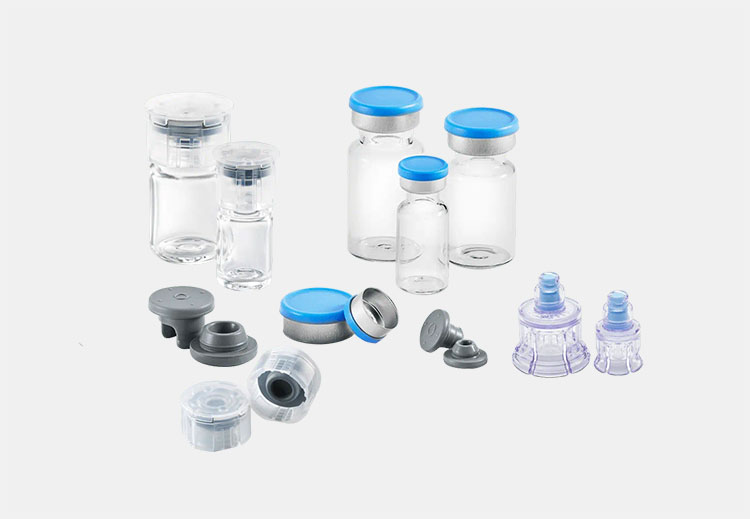
Sealing Closures for Vesicant Chemotherapy Drugs
Did you ever wonder how vesicant chemotherapy drugs are completely sealed? Closures are vital in sealing containers and to prevent drug spilling. That’s why, the best closures must be airtight, chemical-resistant, stress-tolerant, and, tamper-proof. For your information, here is a list of best closures for sealing vesicant chemotherapy drugs:
| Rubber Stopper | Comes under the category of elastomeric closures. Butyl rubber stopper is the best choice for sealing vesicant chemotherapy drug vials because this rubber material is resistant to cytotoxic chemicals, non-reactive, and impermeable. Moreover, by utilizing this closure type, your vial seal integrity is not compromised in any way even if you refrigerate or agitate your vials. |
| Aluminum Crimp Seal | Present on top of rubber stopper to secure them. Their addition to vials, adds a layer of security, as it allows you to observe if the container is tampered with. They also prevent the loosening of rubber stoppers during product shipment. |
| Vented Closures | Only applied during closed-system drug transfer. Have vented caps that are attached temporarily to vials to reconstitute or withdraw drugs. Useful in preventing aerosol encounter of vesicant chemotherapy drug vapors during transfer. |
11.How can you safely store vesicant chemotherapy drugs?
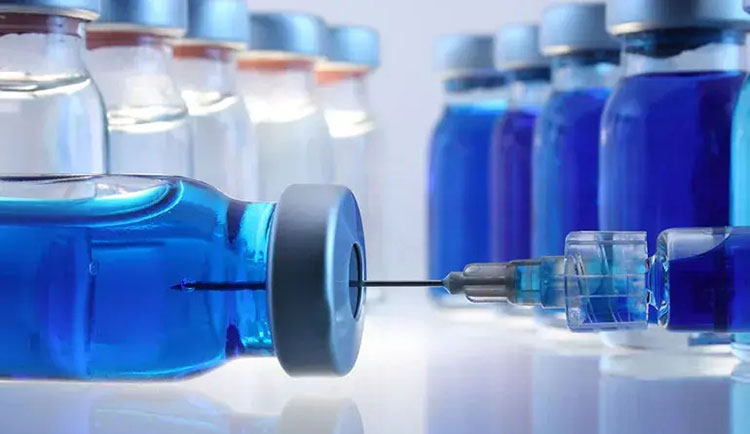
Storage – Picture courtesy: American Coating
Safe storage is integral in keeping vesicant chemotherapy drugs effective for patient use. Failure to do so might cause a change in their structure and, in turn, function. Not only this but this storage practice is also crucial in protecting staff and avoiding accidents. Here is what you can do to safely store your vesicant chemotherapy drugs.
First of all, keep these medications in biomedical refrigerators or freezers with a temperature of approximately 2–8°C. To minimize temperature fluctuations by using temperature monitoring systems. Keep in mind that you should not freeze your product because it affects its potency.
Also, place vesicant chemotherapy drugs on different shelves or trays away from standard, non-toxic medicines. Clearly label these areas with warnings, for example, “CYTOTOXIC,” “VESICANT,” or “HANDLE WITH CARE”. Besides this, these drugs must be placed in secure rooms and only handled by authorized personnel wearing protective gear.
12.What manufacturing problems are associated with vesicant chemotherapy drugs?
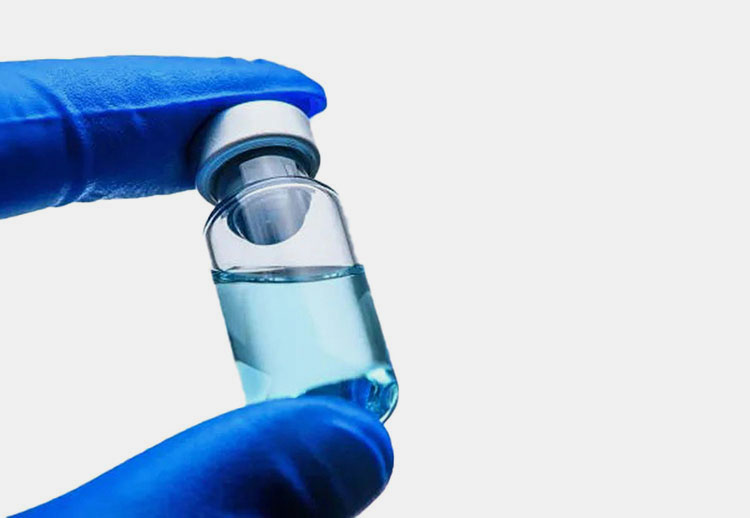
Problems With Vesicant Chemotherapy Drugs
Preparing vesicant chemotherapy drugs isn’t just about blending ingredients together and packing them in vials and other containers. It’s also about mitigating risks at every step of production. These drugs require specialized handling, so manufacturers come across several challenges that must be handled safely to allow best-quality products. Some problems and their solutions in this manufacturing are:
| Problem | Solution |
| High Toxicity of Drugs
As you know vesicant chemotherapy drugs are very cytotoxic, so require diligent handling. If operators encounter even the smallest spill of these drugs, they may have blistering or wounding of tissues. |
It is very pivotal to avoid this issue by using isolators in your productions, glove boxes, and closed containment systems with HEPA air filters. |
| Limited Stability of Drug Substance
Absolutely, you’ll find that these drug substances, for example, doxorubicin are very chemically unstable and may change their structure when you compound or mix them with other ingredients. |
To solve this problem, you’ve to optimize temperature, pH, and, formulation exposure with oxygen, especially when you’re mixing drug substances, excipients, and, solvents. |
| Machine Damage
It is quite obvious that these anticancer agents are chemically aggressive. Hence, their regular processing in equipment certainly ruins seals, pipes, pumps, tubes, tanks, or other components. |
Some suggestions to fix this trouble are: you can integrate machines made with durable and wear-resistant materials, for instance, PTFE, glass-lined steel, or high-grade stainless steel in your facilities. These materials can withstand continuous damage due to vesicant chemotherapy drugs. |
| Packaging Difficulties
There is always a chance that your packaging breaks during transport. Sometimes, it is not sealed properly, so some amount of product may leak while in transit. These points pose a significant health hazard. |
Rest assured, you can counteract this problem by packaging your products in sturdy, leak-proof, and, tamper-evident containers. To achieve this, you can utilize a vial crimping machine, leakage tester, and, cold-chain systems. |
Conclusion
By reading this FAQ guide, we hope you understand that vesicant chemotherapy drugs are not just powerful and healing, they’re double-edged. When mishandled, they’re potent enough to harm tissues and cause blistering, ulceration, scarring, and even result in surgical-level complications. The best news is when manufactured rightly, using precise steps, high-tech equipment, and airtight, and sterile packaging, these anticancer agents become safe and effective treatment means. Planning to invest in vesicant chemotherapy drug production, wanting to improve your current facility, or just exploring more about these drugs, contact us now by filling form below. Our AIPAK ENGINEERING team is ready round-the-clock to help you.
Don't forget to share this post!
CONTACT US
Tell us your raw material and project budget to get quotations within 24 hours.
WhatsApp Us: +86 181 7101 8586
 Tell us your material or budget, we'll reply you ASAP within 24 hours
Tell us your material or budget, we'll reply you ASAP within 24 hours
